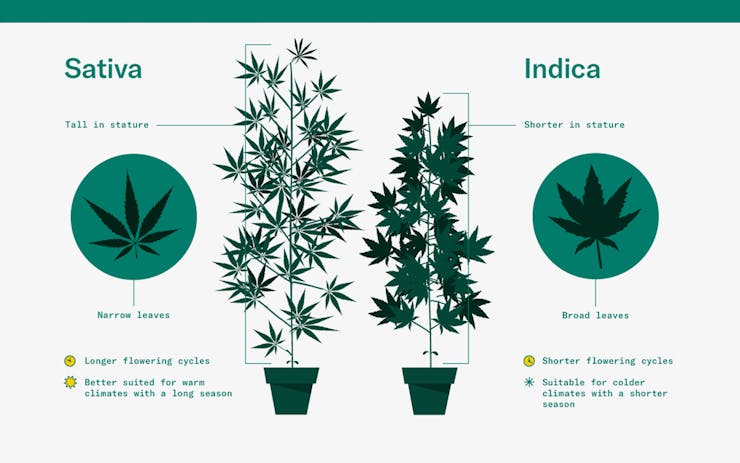Indicas are one of two types of cannabis plants, along with sativas. Indica plants originally grew in cold, northern climates, are short and dense, and have broad leaves. Indicas are also known to have a shorter growing time than sativas, and some turn purple in color.
“This indica makes me want to take a nap.”
“I grew an indica this year so I could harvest it before it starts raining in the fall.”
Where does the term ‘indica’ come from?
There is some debate as to whether indicas and sativas are separate species. The term “Cannabis sativa” was originally used to describe all cannabis by Carl Linnaeus in 1753. In 1785, evolutionary biologist Jean-Baptiste de Lamarck identified a second type of the plant, which he named “Cannabis indica.”
How is the word ‘indica’ used today?
Indica effects are advertised as “sedating” or “relaxing,” but as a strain’s overall chemical profile determines effects, consumer experiences vary widely. Researchers have yet to fully understand how the amount and ratio of cannabinoids and terpenes interact to produce a specific effect in a consumer.
Still, consumers consistently report strong preferences for either indicas, sativas, or hybrids—evidence that a broad correlation may exist between plant shape, chemical profile, and effects. Popular indicas in stores today include Granddaddy Purple and Zkittlez, both intensely hybridized.
Pros and cons of the term ‘indica’
The sativa/strains/hybrid system offers consumers a simple way to choose between different types of cannabis. The downside of this naming system is that it might not actually help someone find the strain that’s right for them, as effects are determined by a strain’s chemical profile, not whether it’s an indica or sativa—two indicas might lead to different effects, and the same strain can affect two people differently.
Ultimately, the terms help growers and breeders understand how a plant will grow and how long it will take to grow until harvest.
